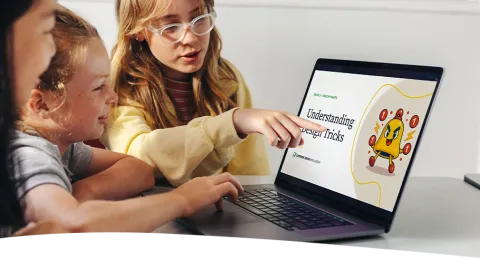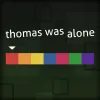
Digital Citizenship Week is October 20–24!
Join teachers worldwide to promote a healthy, positive approach to media and tech.
Take a look inside 5 images
Thomas Was Alone
Pros: Players will explore the meaning of friendship, respect, bravery, and sacrifice while solving fun little logic puzzles.
Cons: A few of the puzzles are pretty simple and won't prove much of a challenge to older students.
Bottom Line: This unexpectedly thoughtful and emotional puzzler could offer valuable lessons about friendship and empathy to kids experiencing trouble socializing.
Consider using this game as a supplement when discussing socializing and cliques. It's a single-player game and likely best used by individual students, perhaps those experiencing trouble socializing with peers. However, its compelling, story-driven design is conducive to a passive audience, so it could potentially be used in a computer lab environment for the whole class or projected up on a whiteboard. Keep in mind that while the game is relatively short for a commercial game, it will still take at least a few classes to work through the entire story.
Thomas Was Alone is a puzzle game about two-dimensional characters seeking depth. Its heroes are all simple quadrilateral shapes, each with a special ability that helps inform his or her personality. One is athletic and craves attention. Another feels isolated because of her differences from the others. One is of average physical ability and grumpy about how unexceptional he is. And the titular Thomas feels alone. But only at first. As he and his friends gather together, overcoming one platforming challenge after another, they learn to respect and even cherish the things that make them different, and see how they're stronger together. Fueling these lessons is a terrific narrator who provides a witty and emotional commentary throughout the game, investing its otherwise simple characters with loveable personalities while offering relatable context for the running and jumping action.
Thomas Was Alone isn't the sort of game that will teach students about math, reading, history, or any other formal school subject, but it may prove useful as a tool to helps kids learn to better socialize with one another and understand what friendship is really about. Its vibrant presentation -- which includes BAFTA award-winning writing and narration that breathes life into the game's personalities and builds empathy -- creates a powerful allegory that's instantly relatable and filled with lessons about how different people can work together to become more than the sum of their parts, learning to respect and even admire one another along the way.
Keep in mind, too, that it has some interesting platforming puzzles that require logical thinking. Students will need to first understand how to exploit the abilities of each of the game's emotional little shapes, then have them cooperate in order to cross various types of obstacles, from steep cliffs to pools of water. The puzzles are occasionally a little on the simple side, but they can generally be relied upon to keep kids' brains ticking.













